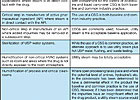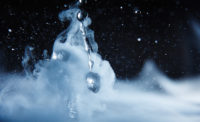
TABLE 1. Good manufacturing parameters used to determine method of steam generation for typical applications.
One steam is clean. Another steam is chemical-free. Are they interchangeable? And what effects do pharmaceutical manufacturing best practices and regulations have on the usual humidification specification process? Let this brief but specific article be your prescription for wiser design.
HVAC systems play an important role in the manufacturing of pharmaceutical products. Operator comfort, temperature, humidity control, directional airflow, cleanliness classifications, contamination control, and process control are several ways that HVAC systems can impact the manufacture of pharmaceutical drug products. The purpose of this article is to add to the current body of knowledge on humidification by raising awareness of the regulatory considerations and requirements design engineers should be aware of and to discuss the types of steam used in pharmaceutical facilities.
The topic of IAQ and humidification using direct steam injection is a popular one. In fact, new technologies and new more environmentally friendly chemicals and methods have been developed and continue to be developed that address health concerns and our current technology. To begin the discussion, it is important for the design engineer to understand the type of process application, regulatory requirements, and the terminology used to describe various steam systems in use in the pharmaceutical industry. In general, steam used in pharmaceutical facilities can be separated into three categories clean steam, chemical-free steam, and plant / utility steam.
This terminology can become confusing when talking to plant operators and endusers. When in doubt, the design engineer should clarify the quality of the steam and confirm if there is any direct impact to the product before undertaking the design. This clarification will minimize the risk of product contamination and may also save money by using a lower-cost type of steam.
Is Chemical-Free Also Clean?
Plant / utility steam is typically generated from a conventional steam boiler and distributed via carbon steel piping. As a result, plant steam has the potential to introduce contamination due to use of corrosion inhibiting chemicals, rust, and/or other undesirable materials, making it potentially unsuitable for use in some pharmaceutical applications.Chemical-free steam is sometimes confused with clean steam. Chemical-free steam is typically a separate plant steam system generated without chemical additives, but it should not be considered clean steam.
Clean steam is steam that is generated from a regulated water source and is distributed to meet a specific level of quality. There are typically two grades of regulated water defined in the United States, pharmacopoeia (USP)/purified water (PW) and water for injection (WFI). PW must meet a specification for conductivity, total organic carbon (TOC) and microbial content. WFI must meet the same specification as PW, but in addition, there is a higher microbial spec to comply with and there is also an endotoxin spec.
Further, regulations require that WFI be produced by one of two methods (distillation or reverse osmosis). The purity of the clean steam is deter-mined by referencing a sample of the liquid condensate to the USP acceptance criteria noted above. Because corrosion inhibitors are not added to the system, and also because USP water by definition has very low conductivity, it is in itself corrosive. As a result, the piping distribution system for a clean steam system is usually made of corrosion resistant ANSI 316L stainless steel.
From a regulatory perspective, the use of clean steam in pharmaceutical applications is determined by the rules outlined in the current Good Manufacturing Practices (cGMP’s). These general rules are applicable to pharmaceutical manufacturing and are detailed in the Code of Federal Regulations (CFR title 21, Part 211). It should be noted that the CFR does not specifically provide a recommendation regarding the type of steam to be used in humidification, but in general, the CFR presents general requirements for facilities, systems, equipment, and operations stating that designs and system applications help prevent the contamination of pharmaceutical drug products.
On The Job
From the process perspective, when steam is used for indirect humidification, such as injection into HVAC air systems, the general rule process engineers follow is that the steam does not need to be any purer than the air that it is being mixed with. Hence, the IAQ concerns when chemical inhibitors are found present in the steam. This is why the design engineer must take into account the potential level of impurities, including boiler additives (amines and hydrazines), as well as other impurities that may be present in the steam system that could find their way into the final drug product when humidifying a process airstream. The design engineer should look specifically for areas where open processing takes place, and where the steam could possibly contribute significantly to the contamination of the drug. In these cases, a purer grade of steam (clean steam) should be selected and applied.Generating clean steam via high-quality water is typically significantly more expensive than utility steam, and therefore it should be used only when required. The guidance found in Table 1 has been developed to help design engineers identify typical applications and methods of steam generation in cGMP regulated facilities.ES





